I am a cat owner and like many cats, Scamp has his favourite spots around the house where he likes to take his cat naps. These are obvious to anyone, by the circular patch of black hair that clings to the upholstery and carpet. Over time, it is really quite difficult to remove his hair from these surfaces, using a regular vacuum cleaner, without exerting quite a bit of effort. The original red
- It comes with an EcoBrush that is better at removing pet hair than the standard floor tool.
- It has a special filter for reducing pet odours.
- Quite heavy.
- Awkward for stair cleaning.
There is absolutely no difference between Henry Pet and Harry - they are the same machine with a different name. So if you are a pet owner, opt for whichever is cheapest at the time.
James Cook - Product Tester at The Henry Range
Who is Harry for?
Harry is a canister vacuum that you pull along behind you as you go. He is of the original design that
What is the difference between Harry and Henry ?
These two machines both come with the same set of attachments, including the main floor head (Combi Floor Tool), crevice tool, soft dusting brush and upholstery brush. However, Harry comes with an EcoBrush 190 floor tool, which has a rotating brush roll that picks up stubborn pet hair much better than the standard Combi Floor Tool. Furthermore, Harry has a microfresh activated charcoal filter, which reduces pet odours.
Regarding the size difference, Harry is a little larger (340 x 360 x 370mm), than
The suction power and cleaning range are both identical for these two machines.
What is the difference between Harry and Henry Pet?
There is no difference whatsoever between Harry and
Both machines include the EcoBrush 190.
Unboxing and assembling
Harry comes in quite a compact box and inside you will find a black crush-proof hose (that connects on to Harry’s nose), the metal extension wand (made up of three tubes that stick together), combi floor tool, EcoBrush floor tool (for pet hair), crevice tool, soft dusting brush, upholstery brush and the adapter that connects these attachments to the end of the wand or hose. Lastly, you also get the charcoal-infused filter and a dust bag.
Assembling Harry was very intuitive, and I did not even have to look at the instructions. All I had to do was slot the three metal tubes together (to form the wand) and then slide one end of the hose onto one end of the wand. Next, I screwed the other end of the hose onto Harry’s nose. The bag was easy to install, slotting easily onto an interior nozzle and then the filter sits just above it, underneath the motor. Lastly, I pushed the combi floor tool onto the end of the wand, plugged Harry in and I was ready to go.
Cord Length
The length of the cord is an important feature in my opinion, as it really impacts how quickly you can dash around your home with a vacuum cleaner. A short cord means that you have to constantly relocate to a new plug, winding in the cord and trailing it behind you. Thankfully, Harry has an impressively long 10-metre cord, which is enough length to allow me to vacuum an entire floor of my 3-bed home without switching to a new plug. All I had to do was plug in to a socket in my downstairs hallway, and I could reach all the way into the kitchen, toilet and front room. I could even reach all the way up the stairs, across the landing and into my study.
Dust Capacity
Harry vacuum has a huge dust capacity of 9 litres, which is quite a bit of an increase over the 6 litre capacity that you get with the standard
To install a dust bag, first you have to release two clips that are located on the side of the machine, on the rim. Once released outwards, which it exposes the filter that sits underneath. Then, simply lift out the filter and slot an empty bag onto the interior nozzle.
These dust bags feel thick to the touch and they have a clever flap that prevents any dust and debris from falling out when the time comes for you to dispose of the bag. This kind of capacity means a single bag will likely last you many weeks, if not months. Lastly, these bags are inexpensive to purchase, with a pack of 10 costing approximately £10-12.
I have owned a vacuum cleaner in the past that did not use bags and instead, you had to manually empty a compartment and then clean all of the filters. I found this process to be very messy and it would always make me sneeze, so I am a big fan of these dust bags.
Attachments and their use
Harry comes with two floor head tools and three additional attachments and all feel strong, tough and well built. There is only one additional floor tool that comes with Harry, compared with
Combi Floor Tool
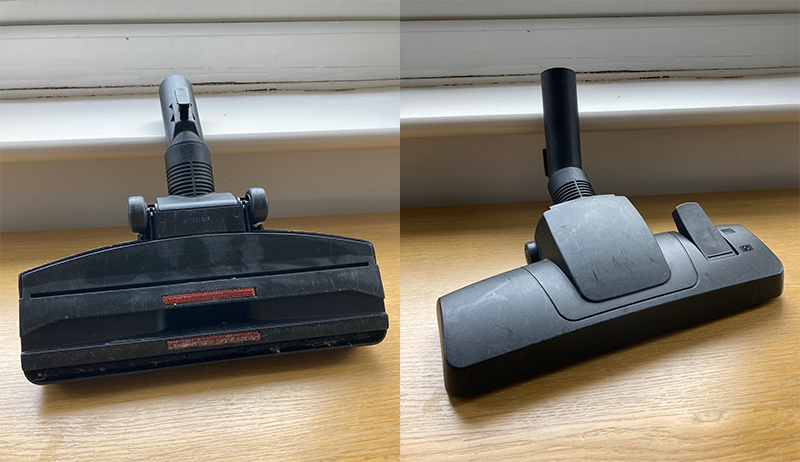
The Combi Floor Tool is the standard floor head that comes with almost every vacuum cleaner in the
Ecobrush
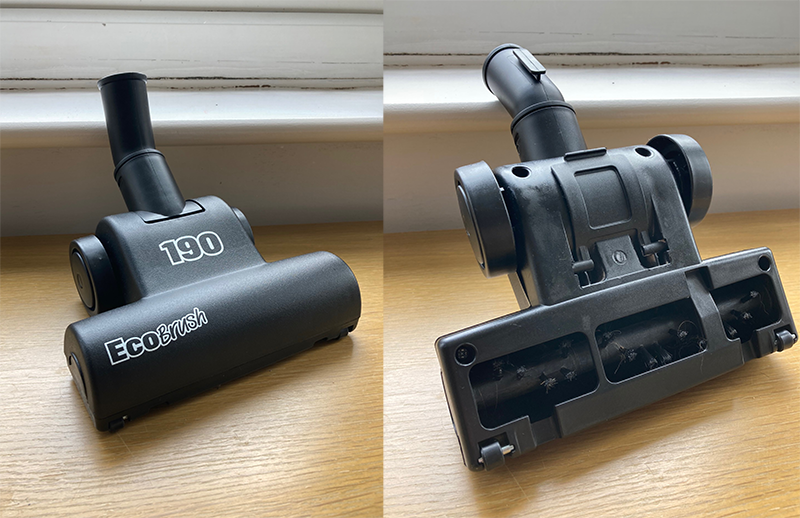
Now this is really what sets Harry apart from
EcoBrush vs. Combi Floor Tool Performance Comparison on Pet Hair
This experiment was originally carried out on the Henry Pet vs
Before
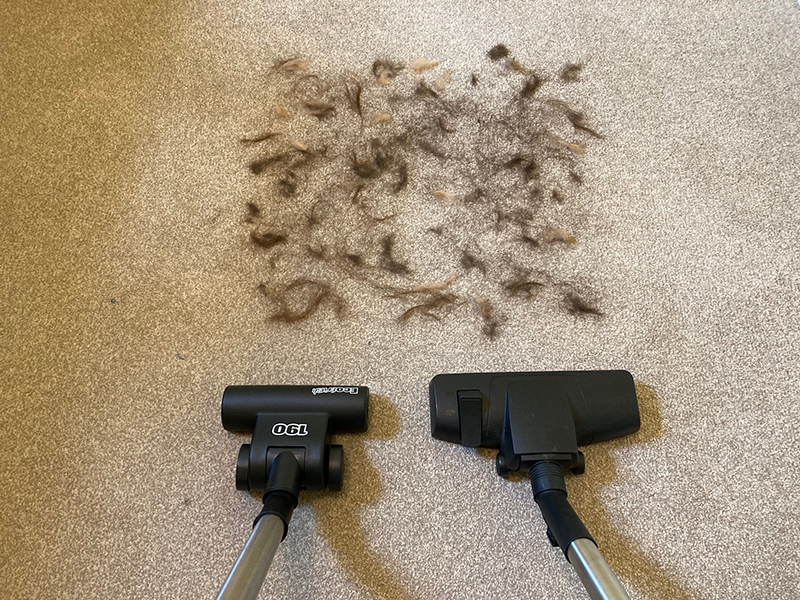
The EcoBrush is on the left, and the Combi Floor Tool is on the right.
After (four strokes total, up and down)
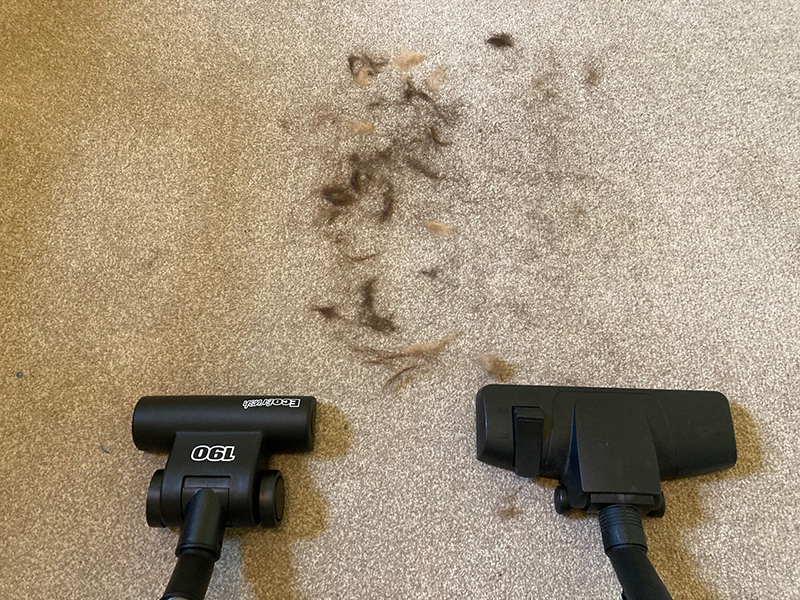
This test shows quite a clear winner, with the Ecobrush coming out on top on this sample of pet hair and other detritus. It is evident that the rotating brush bar really makes a difference, and this is a worthy addition to this machine and a real, clear reason for pet owners to opt for Harry, instead of
Upholstery Brush
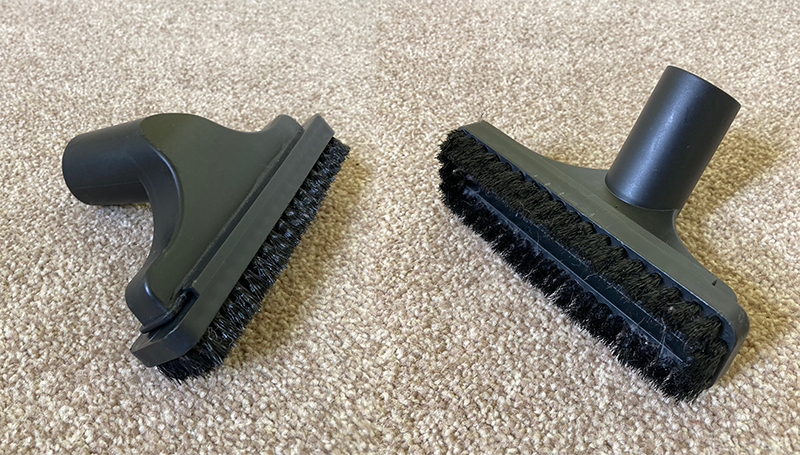
The Upholstery brush is one of the tools intended for handheld use, which can be attached to either the hose or on the end of the wand (for reaching high up). It is small and rectangular in shape, with a circumference of firm bristles that can slide on or off. It is intended to be used for any flat surface that is too small for the larger Combi Floor Tool to handle, such as sofas, stair treads, chairs and floor mats in your car. I found that the bristles were really effective at agitating the hair and dirt that had built up on my stair treads in particular.
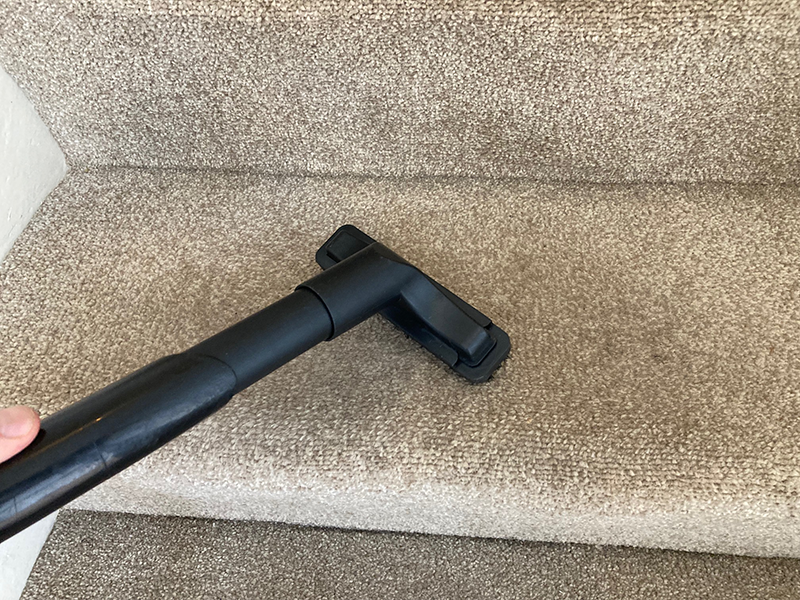
Furthermore, I recently replaced an old chest of drawers in my house with a new Ikea version, and the upholstery brush came in handy for giving the neglected carpet that was underneath it a deep clean, producing better results than the Combi Floor Tool mainly because it concentrated all of the suction power on a much smaller surface area.
Great marks from me for the upholstery brush, which it occurs to me will likely be used on every vacuuming session in the home.
Soft Dusting Brush
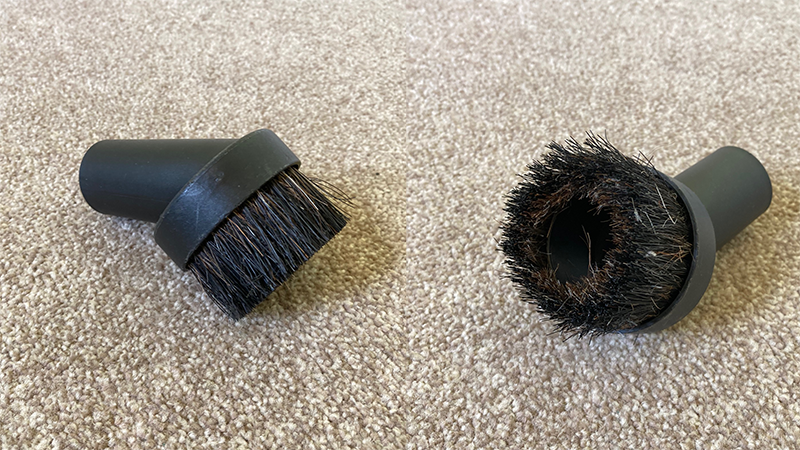
The soft dusting brush is circular in shape, with much finer bristles around its circumference (similar to horse hair consistency). It is intended to be used to vacuum delicate objects, which the upholstery brush would risk scratching or damaging in some way. For example, vacuuming picture frames, ceiling fans, lamp shades, blinds, clocks and more. I found this attachment particularly useful for my ceiling fan blades, which are flimsy and liable to be scratched if I were to use any other attachment.
Crevice Tool
Lastly, the crevice tool is long and thin in shape and is designed to reach those crevices or tight gaps that are often impossible to vacuum with a regular attachment or floor tool, as well as the spots surrounding items of furniture or along skirting boards. I also found this attachment to be really useful for the car, reaching down the sides of the car seats to access those old bits of biscuit and god knows what else. It also doubles up as a way to super-charge the suction power of the machine (because it funnels all of the suction power through a very small gap), for lifting up really stubborn dirt on all kinds of upholstered surfaces.
Car Cleaning with Harry
With two young children in our family, our car is often very far from what you would describe as “clean”. I was therefore interested to see how useful Harry was as a car vacuum cleaner, and I was not disappointed. Firstly, the long cord provided me with enough length to reach my car without having to use an extension cable. I found myself gravitating towards the upholstery brush to begin with, which was really useful as agitating the hard mud on my floor mats, as well as the floor in the boot. The shape of the upholstery brush also made it perfect for this (flat and rectangular).
I also found the crevice tool useful for reaching down the side of the car seats, and the upholstery brush was excellent on a number of areas, including the seats and the entire dashboard. The soft bristles on the dusting brush were really effective at agitating all of that fine dust that gathers on the wheels and knobs.
Harry gets top marks from me for car cleaning. The soft dusting brush, crevice tool and upholstery brush allow you to vacuum all of the different surface types and the suction power is really quite impressive. Typically, I have used handheld battery-operated vacuums to clean my car, and this is a big step up in terms of the cleaning results you can achieve.
Filter
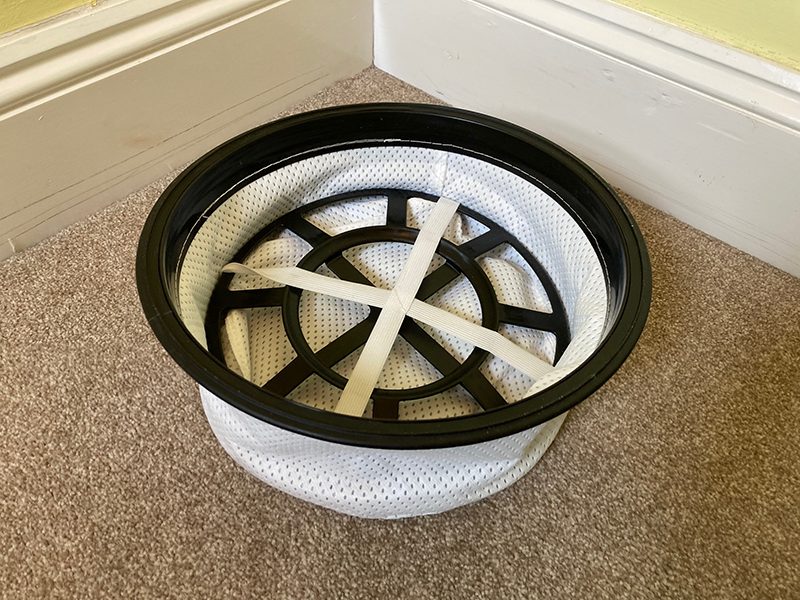
All of the dry vacuum cleaners in the
Storing Harry
Even though Harry is a little larger than
In my experience, it was much easier to find multiple suitable areas for storing Harry away, out of sight, compared to upright stick vacuum cleaners that I have owned in the past, which are harder to disassemble. I settled on keeping him under our stairs, with the wand fully assembled and the Combi Floor Tool attached.
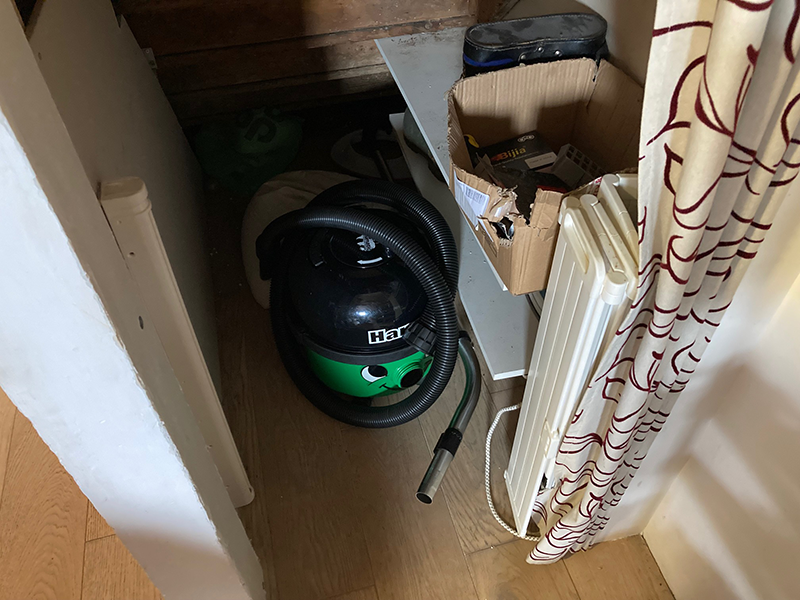
In terms of accessory/ tool storage, Harry has a convenient caddy on his back, which allows you to clip on two attachments as you move around your home, as well as a floor head (with wand attached) whilst stored away. I found it really useful being able to reach down and grab an attachment, instead of having to keep one in my pocket or simply stop vacuuming and walk to where I had left them. The trick to fast, effective cleaning with this machine is to keep swapping the attachments around, so this is a well-thought-out and practical design feature that I really like.

Stair Cleaning with Harry
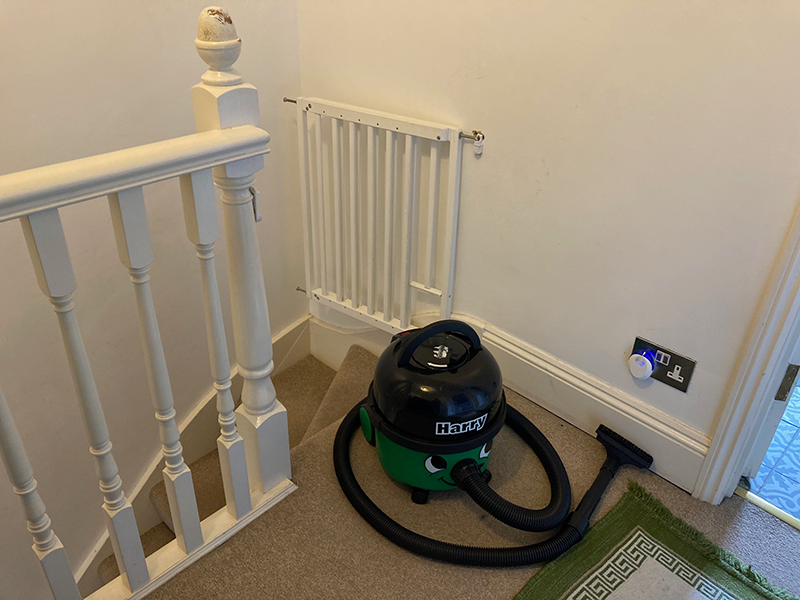
I found Harry to be a little awkward for stair cleaning, because he is too large to rest on a stair tread. This means that you really have to hold Harry in one hand, as you vacuum with the other. Now, if Harry was a super lightweight machine, this wouldn’t be much of an issue, but this is not the case. Indeed, Harry is actually quite heavy, so I would not recommend him for anyone of a certain age, or those with strength or mobility issues.
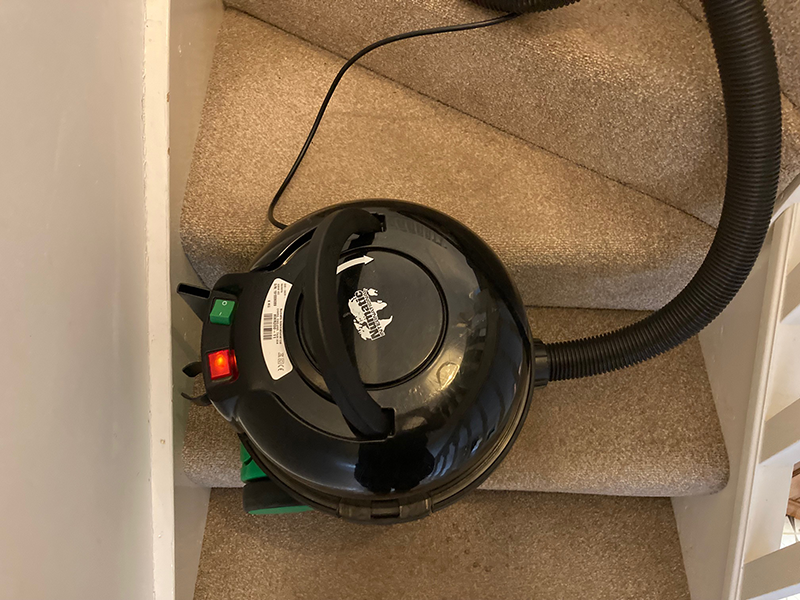
There is one workaround, where you place him at the top of the stairs and then reach down with the hose, and then repeat this from the bottom. However, this could be a little dangerous, with the prospect of the machine being tugged down the staircase.
All in all, Harry is not the best vacuum for stair cleaning and this is a disadvantage worth noting in this review. The attachments themselves are great at cleaning the stairs (mostly the upholstery brush), it is just the effort required that makes it difficult.
Moving Around
Harry sits on two rear wheels and two front casters and he trundles along behind you as you move through your home. I found that I tugged him along using his hose, which I did not worry about because the hose is so thick and strong, so I was confident that it would not damage it. He is quite easy to pull along, and it does not require any particular strength. However, on a few occassions, he did bump into door frames, a coffee table and other objects, so I was a little concerned that his side would either become damaged, or my furniture. I was therefore reassured that this would not happen when I spotted a strip of rubber that runs around the circumference of the machine, which will soften any blows and prevent such damage from happening.
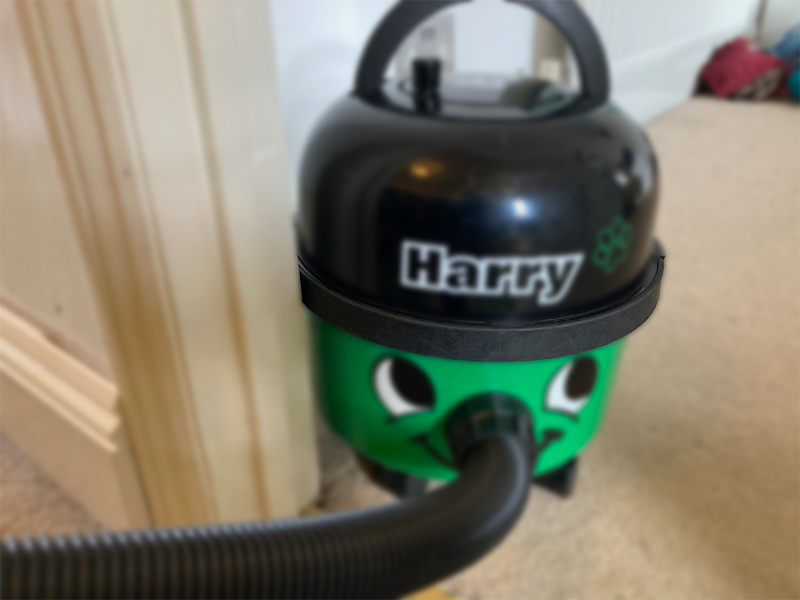
I almost didn’t notice that there is even more rubber coating on the rear wheels and front casters, which I presume will protect hard floors from scratches.
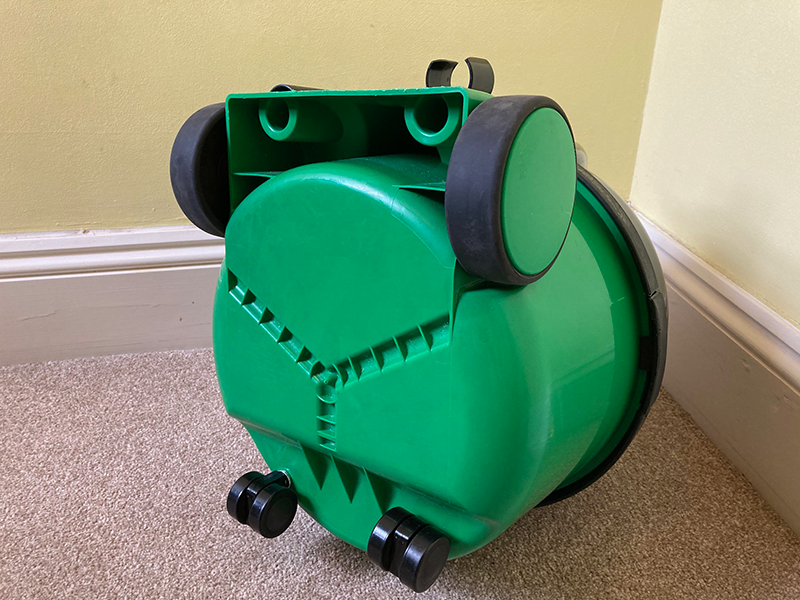
Did you find this content useful? If you have time, your review on Facebook would really help us out!
Final Verdict
Harry is a fine example of a vacuum cleaner that is extremely well built, with a small but still significant number of sturdy, practical attachments that have been well thought out, providing you with all of the tools you need to tackle every vacuuming job in your home. The Ecobrush really does separate this from the regular Combi Floor Tool that you get with
It is true that this machine is quite heavy and is not particularly well suited for stair cleaning, so if you have any strength issues or you like the idea of a lightweight vacuum cleaner, this may not be the vacuum cleaner for you. However, if you like the idea of a vacuum that has been specifically designed for pet owners, which will most likely last for many years, I would really recommend Harry to you.
Lastly, if you already own a
Where to buy Harry
- It comes with an EcoBrush that is better at removing pet hair than the standard floor tool.
- It has a special filter for reducing pet odours.
- Quite heavy.
- Awkward for stair cleaning.
- Review of the Henry Wash Carpet Cleaner - March 17, 2025
- Henry Quick Review - January 13, 2025
- The Henry Vacuum Range – What are the Differences in 2025? - January 5, 2025
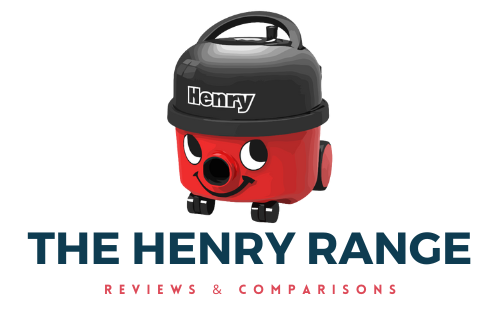

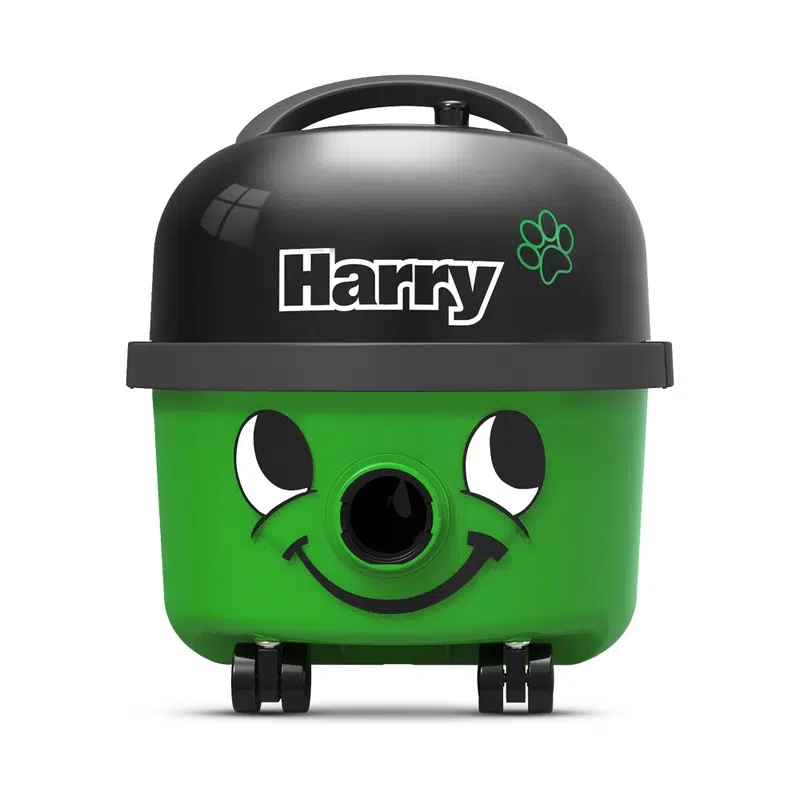
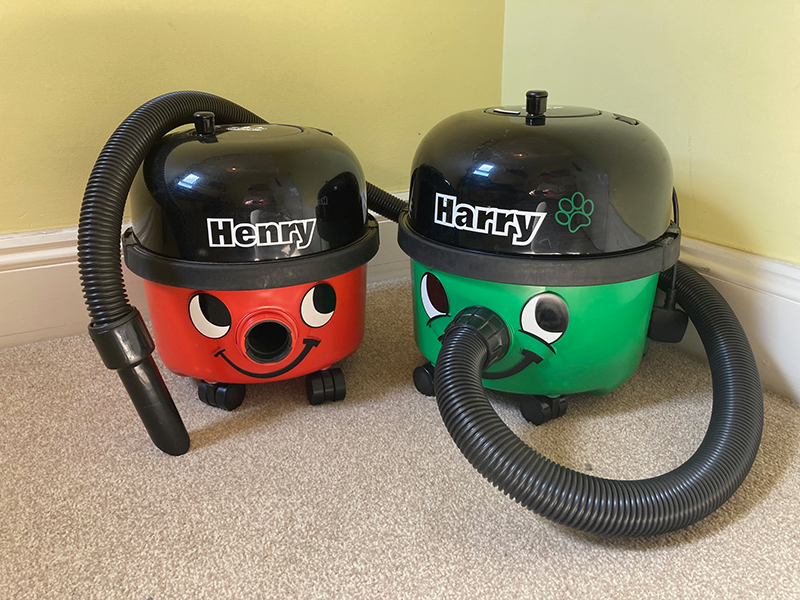
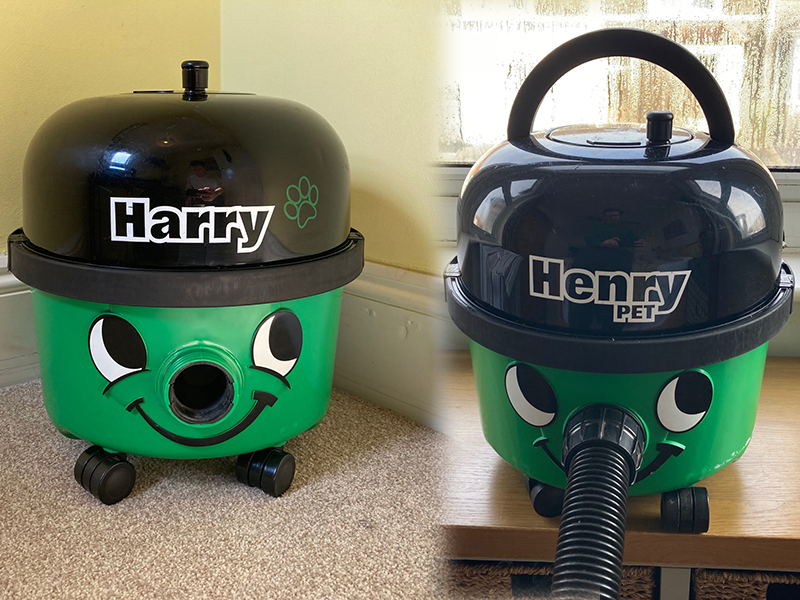
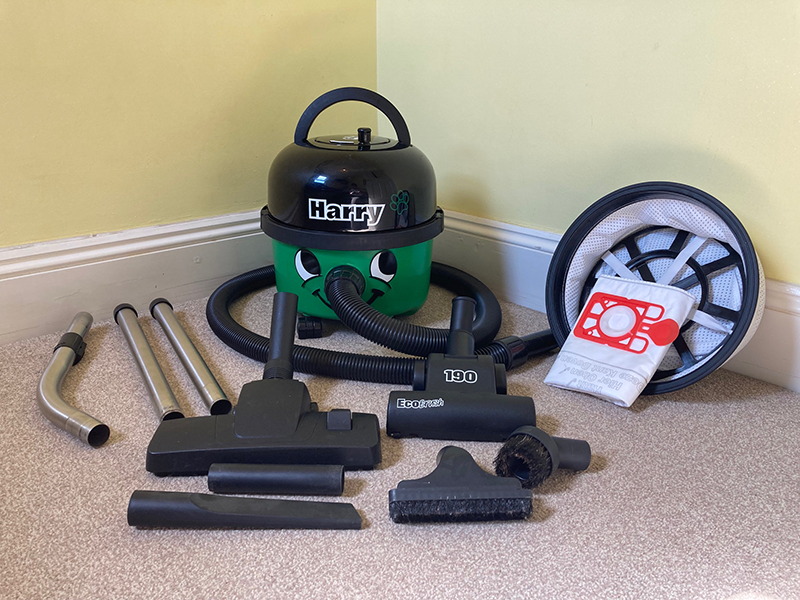
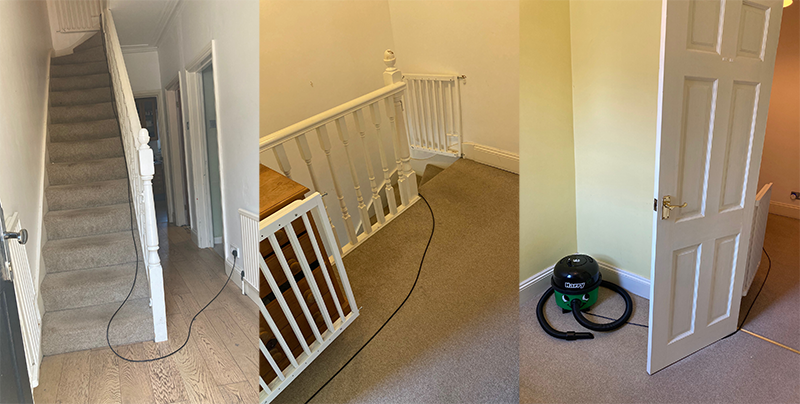

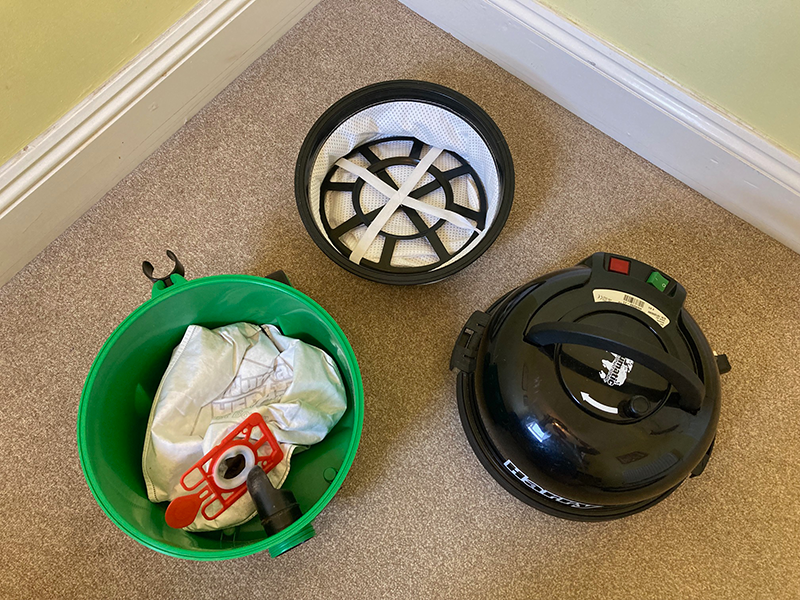
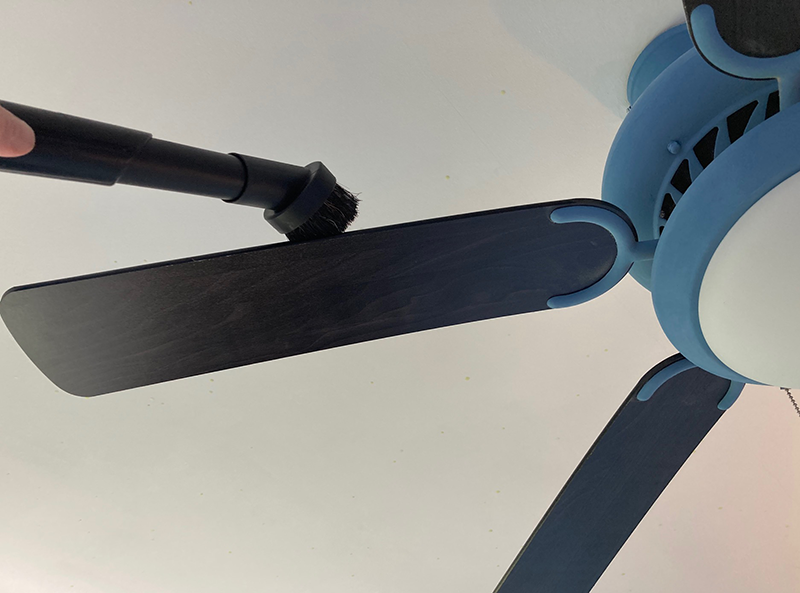
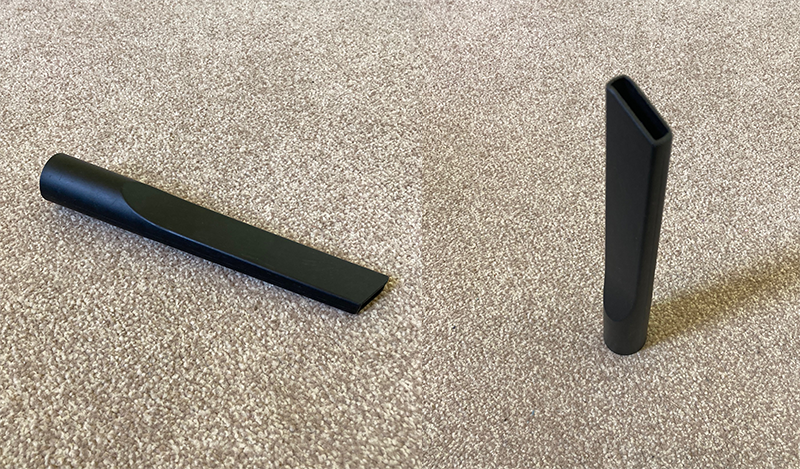
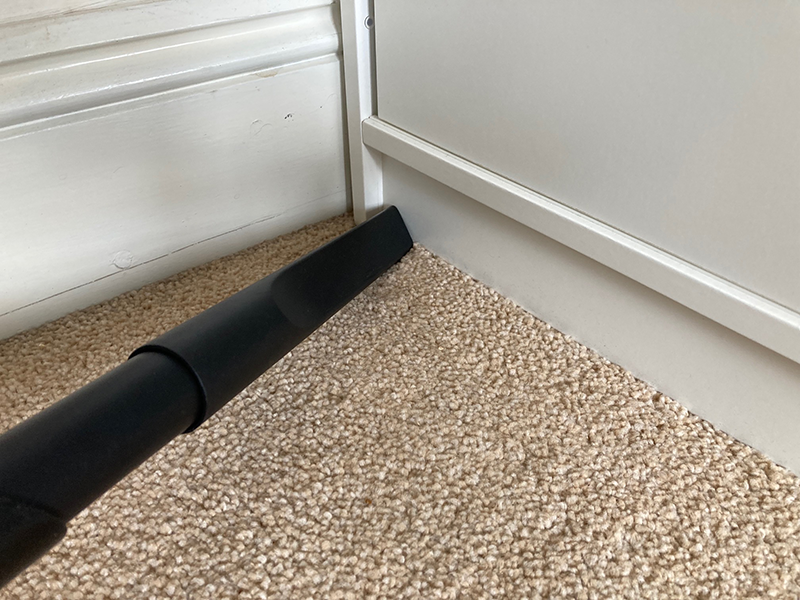
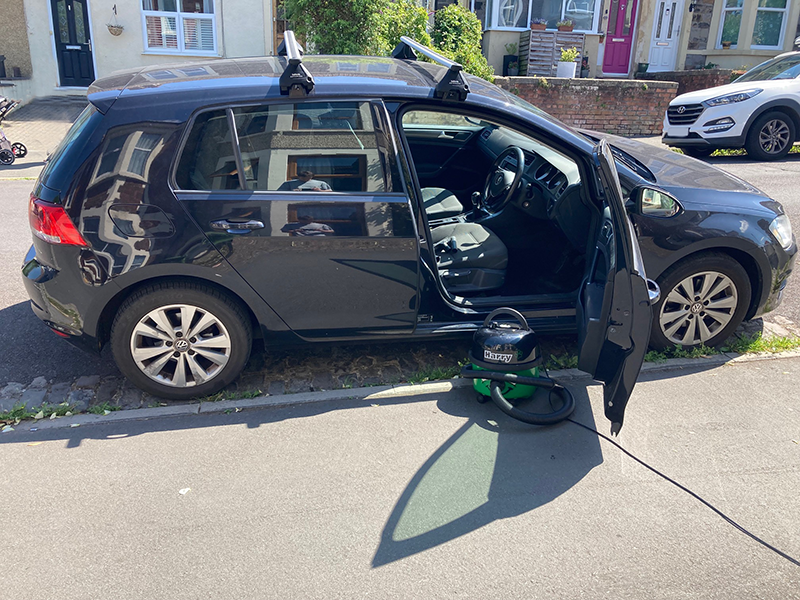
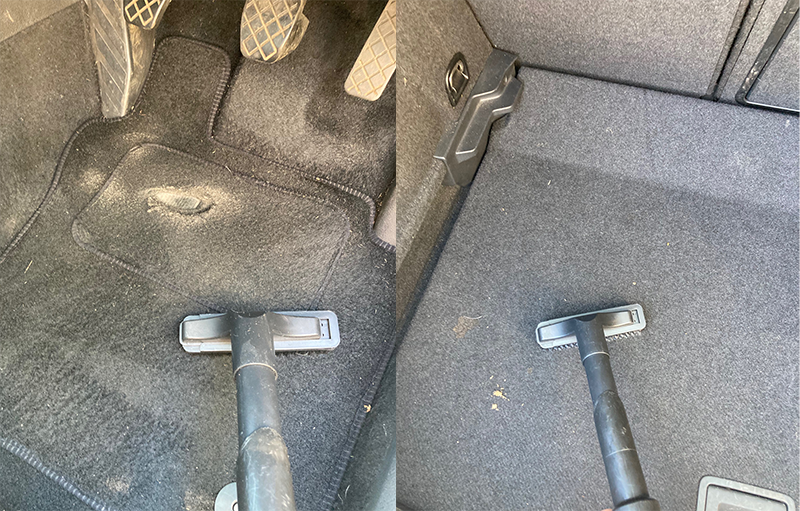
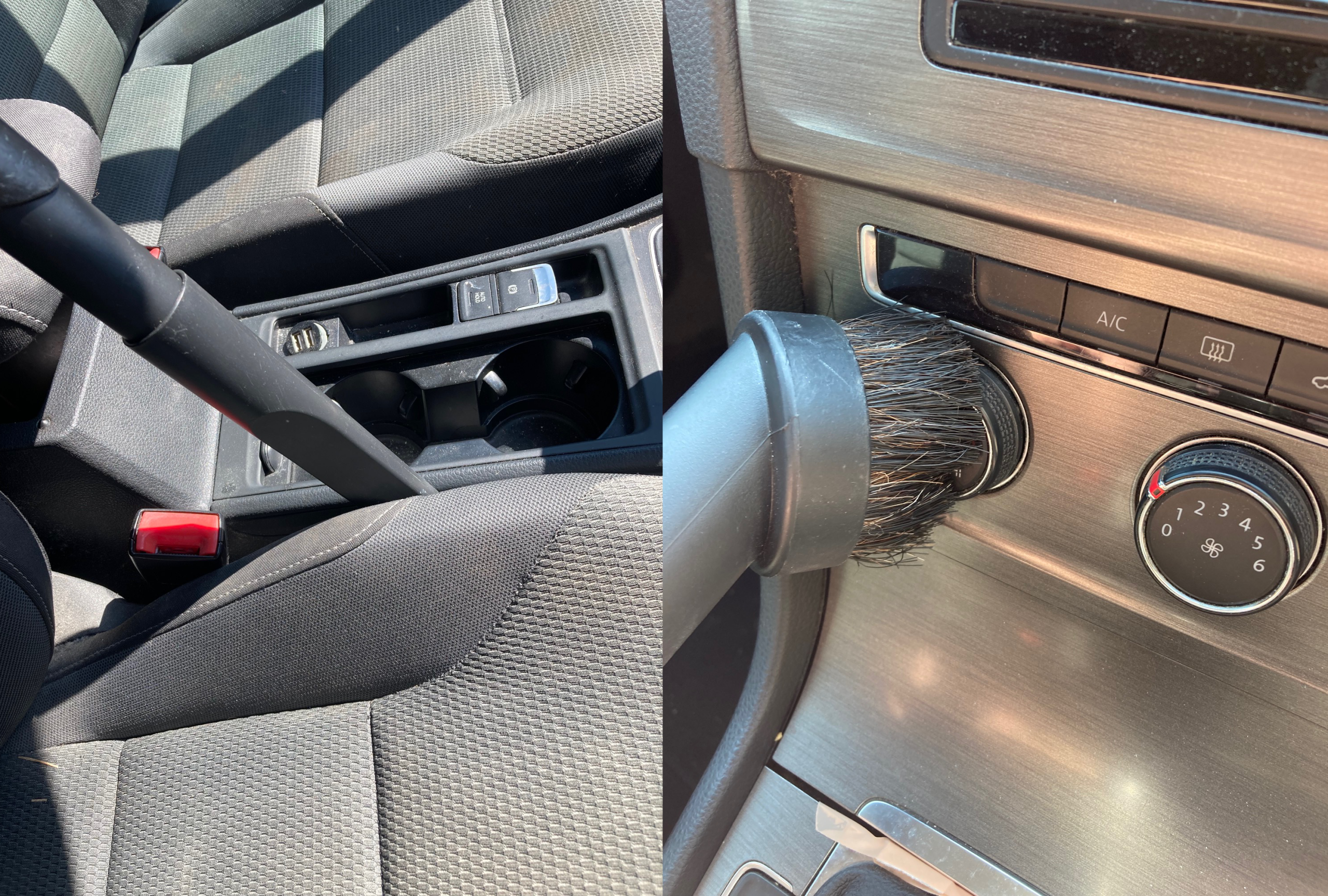

Would I be able to purchase a longer hose so that I could reach up the stair easier.
Janet Masters.
Hi Janet. You can indeed! There are hoses up to 5m long I believe.